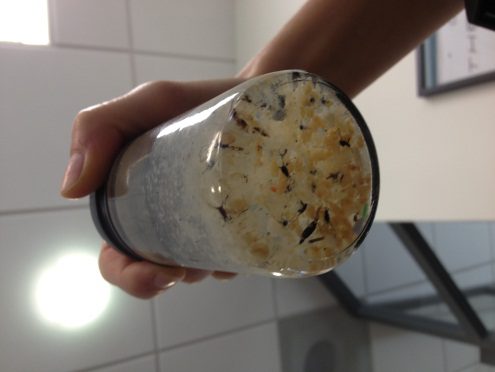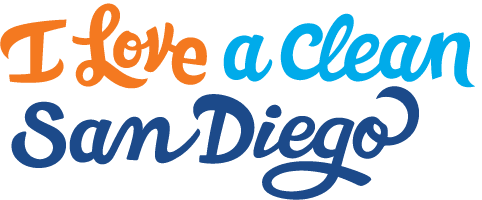Today’s blog post comes from our Education Coordinator and Plastics Detective Extraordinaire, Erika Bjorkquist

Today, we received a ‘sick’ new hands-on piece to augment our Watershed Protection Presentations. When you look at the picture below, what do you see? Before scenes of snowglobes flash through your mind’s default state, look closer. Those white specks are not falling snowflakes, but organic materials. But is that it? Along with plankton and other invertebrates, you can see plastic. One of these things is not like the other. What is plastic doing alongside plankton, and a better question is why do I feel the need to tell you about this? This latest addition to our educational resources is a sample from our oceans, specifically the North Pacific Subtropical Gyre, plastic and all.

I first heard about the Great Pacific Garbage Patch in 2003 in Mr. Dorr’s APES class. Since my discovery, I have become more interested in the topic and finally in 2013, I feel comfortable enough with the subject to introduce the problem to others. The problem is that our oceans are inundated with trash. While many varieties of trash enter our oceans each second, minute, day, year, plastics are what are sticking. Mr. McGuire was right, plastics are the future. They are the future of our oceans. The reason that plastics have developed into such a big problem is that they do not biodegrade, like organic material, they photodegrade. Like the name suggests, plastics breakdown [degrade] by sunlight [photo]. This is not a chemical change but a physical one; they do not disappear, they simply become smaller and smaller pieces of plastic.
These plastics are considered microplastics, a mere 5mm in diameter. Their accumulation creates a ‘plastic soup’, which comprises the Pacific Garbage Patch. Yum. This is a recipe for disaster, as our sea creatures have not adapted to our trash in their habitats. Often times animals will ingest trash when instead of food. I mean, can you differentiate between plastic and plankton in that jar?
While this seems dark and stormy, there is a solution! It starts with education. I Love A Clean San Diego talks about these issues and more in our Watershed Protection presentations. For more information about our programs, shoot me an email at ebjorkquist@cleansd.org.

